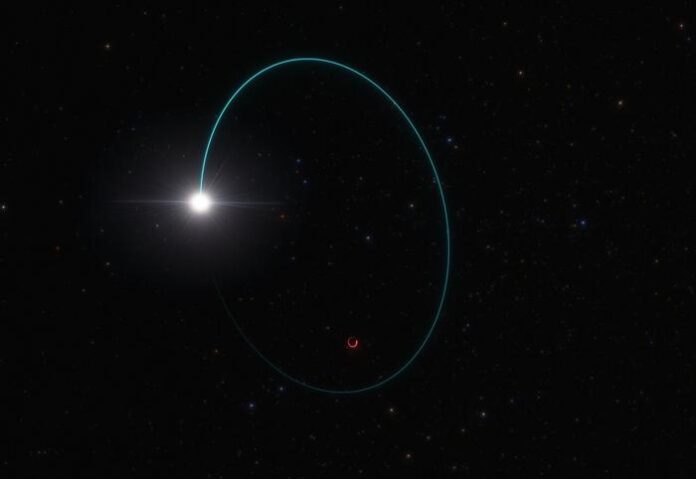The biggest hole formed from a collapsed star in the Milky Way Galaxy resides 2,000 light years away from Earth in the Aquila constellation. Researchers spotted the black hole when they noted the wiggle of a nearby orbiting star.
“No one was expecting to find a high-mass black hole lurking nearby, undetected so far,” said Pasquale Panuzzo, an astronomer at the Observatoire de Paris, and one of the study authors, in a press release. “This is the kind of discovery you make once in your research life.”
After noticing the wobble, the European Southern Observatory’s Very Large Telescope and other Earth-bound observatories confirmed the size of the black hole. It’s estimated it’s about 33 times bigger than the Sun. Still, it is not the biggest black hole in the Milky Way galaxy; that title belongs to Sagittarius A, the supermassive black hole at the center of our Milky Way Galaxy.
Details on the study were published in Astronomy and Astrophysics. The findings can help scientists understand how black holes of this size form and evolve.
Read More: This is What a Black Hole Sounds Like
The Biggest Black Hole in the Milky Way
A map of where the Gaia black holes are located in the Milky Way galaxy. (Credit: ESA/Gaia/DPAC)
This black hole named Gaia BH3 is the second closest one to Earth. Usually, black holes like this are found with gravitational waves. But, at times, they can be spotted when the massive voids pull in matter from unfortunate nearby objects. If it does this, the light sparks give away their position in the galaxy. Until then, they are practically invisible and tough to spot.
However, when researchers spotted a star with an unusual orbit, they decided to take a closer look. It turns out that it was caught in orbital motion with a dormant black hole. Gaia, the European Space Agency’s large camera that charts the thousand million stars in the sky, has spotted black holes before. BH3 is its third find.
Experts think that these holes form from collapsed stars that contain little elements heavier than hydrogen and helium or very few metals.
Other data from the European Southern Observatory’s Very Large Telescope suggests that the companion star orbiting BH3 is metal-poor and that BH3 might have also been a metal-poor star that later collapsed.
How Gaia Formed
Researchers suspect that the star orbiting BH3, probably formed in the first two billion years after the big bang, according to a press release.
“What strikes me is that the chemical composition of the companion is similar to what we find in old, metal-poor stars in the galaxy,” said Elisabetta Caffau of CNRS, Observatoire de Paris, and an astronomer also involved with the study, in a press release. “There is no evidence that this star was contaminated by the material flung out by the supernova explosion of the massive star that became BH3.”
This means that the black hole most likely caught its lone star companion after birth in a different system.
Article Sources
Our writers at Discovermagazine.com use peer-reviewed studies and high-quality sources for our articles, and our editors review for scientific accuracy and editorial standards. Review the sources used below for this article:
Elizabeth Gamillo is a staff writer for Discover and Astronomy. She has written for Science magazine as their 2018 AAAS Diverse Voices in Science Journalism Intern and was a daily contributor for Smithsonian. She is a graduate student in MIT’s Graduate Program in Science Writing.
Source : Discovermagazine














